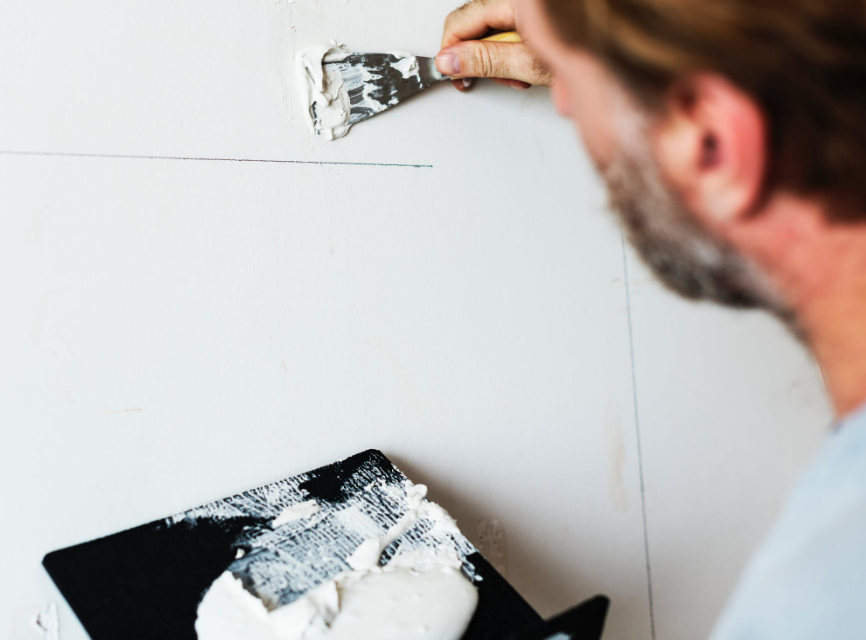How long does it take to paint the inside of a home?

This question gets asked quite frequently, and the inevitable response always seems to be: it depends!
As mind-numbing as it is to hear that, it’s completely accurate. There are a lot of factors that go into the timeframe of painting a house, or even a room. Actually, one of the first questions you need to ask yourself is who will be doing the painting? Are you hiring a professional, or doing it yourself? An experienced painter is obviously going to be far more efficient while maintaining quality work than a person who has little to know painting experience and are just looking to DIY a home project.
Today, we will break down those factors, and even give you insight from outside painting experts on a standard timeframe. With that being said, let’s get into it!
First, I want to go over a general list of questions that should be asked when it comes to painting projects. So often customers will call a painting company and ask for a quote on their bedroom, with giving extremely basic information such as, “It’s about 20’x20’”. Well, that isn’t enough to get a remotely accurate quote. Therefore, professional painting companies won’t give any kind of structured pricing until they can do an on-site estimate where they can see the job for themselves and answer their list of questions.
Typically, here are the questions they’re looking to get answers to for each job:
- What is the square footage of the overall area needing to be painted?
- It’s very common for painting companies to charge by the square foot, and linear foot for trim work. Since the amount of paint needed is calculated by the square footage, it makes sense to calculate the labor charges that way as well.
- What exactly are we painting? (Walls, Ceilings, Trim, Closets, Doors, etc.)
- This makes a huge difference. For instance, painting a bedroom where only the walls need to be painted is going to go a lot quicker than if you’re looking to have all of the trim, moldings and ceilings painted as well.
- Are there stairs?
- Depending on the type of staircase you have, it may be more difficult to paint the walls, and it also takes more time to cut in around the stairs themselves than just cutting in a straight line.
- Vaulted or raised ceilings?
- These not only increase the square footage, but also increases the time and level of difficulty. Extra ladders, materials and possibly scaffolding could be required to paint.
- Is there flooring and furniture in place?
- This is important because painters need to have an open area as possible when performing their work. If the homeowner is unable to move their furniture for a particular reason, then this is added time to the prepping stage of the job, which obviously would consume more time.
- Any other obstructions in the way that we must paint around?
- Typically anything that is on the walls should be removed, along with any nails or screws to prevent ruining the roller covers and to ensure an even coat is applied. However, sometimes homeowners have murals, or large mirrors that they wish to not be removed. Painter will have to cut in around those and will add time to the job.
- How much patching/sanding will be involved?
- Minor wall repairs are typical. Painters will usually start here and scrape away any imperfections and patch any areas needed. They will do any cutting in and trim work while their patching areas dry and go back and sand the areas prior to rolling the walls.
- Size of dedicated staging area?
- Having a good-sized staging area is important. It allows painters the space to lay out their materials and paints and have a nice organized system throughout the job. If they constantly must run back to their trucks to get materials, that will add up quickly.
- Is there priming involved?
- This is very important. If you’re needing to prime an area before painting, you’re essentially doing the entire room twice. Yes, primer typically only needs one coat and usually goes quicker than when you’re applying your paint, but the time consumption is roughly an additional 70% than if no primer is necessary.
- Can the job be sprayed, or does it have to be brushed and rolled?
- These types of painting all have their advantages, and if used in certain situations can greatly reduce the labor time (and cost) to a painting job. The professional coming to estimate your home will be able to tell you the best painting method given the current status of your home.
- Are the walls, ceilings and trim going to be different colors?
- Much like the areas being covered, the color of the paint that goes on different areas can have a factor on job time. For instance, if you’re painting the ceilings white, the walls tan, and the baseboards white, there is going to be a lot more time consumed in cutting each of these areas in. If they were all getting the same color, cutting in would be a lot quicker and you would be able to get to rolling the walls and ceiling much faster.
- What type of paint and level of paint quality are you looking for?
- This is referring to not only the type of finish (Flat, Satin, Semi-Gloss, etc.) but the brand and quality of your paint as well. Most companies won’t bother using the standard paint brands (Behr, Glidden, Valspar) and will give you their industry standard paint. When it comes to paint, you definitely get what you pay for. The more expensive lines of paint, such as Sherwin Williams, PPG and Benjamin Moore put more in their paint to protect against water, oils, dirt, grime, and even scuffing. The application for these types of paint are much smoother and cover far better than cheaper paints. When you use a quality paint product over a cheap one, chances are you’ll end up saving money because it will cover better and call for far less touch-ups and will hold up much longer. Paying a little extra up front for a quality paint will save you money in the end, guaranteed!
- How many hours can our painters have access to your home to work?
- This is helpful because painters can schedule their jobs accordingly and give you a pretty accurate time-frame. This may be too obvious to write, but if the availability in your home is only a few hours a day, you’re extending the project duration quite a bit. It’s always good to allow your painters to be working in your home for at least 8 hours a day. Most painters will work later hours if they only have a little bit of work left and can finish a job that day/evening instead of dragging the job on for another day. This doesn’t mean their rushed to get your job done by any means. The overhead and gas is a big factor for companies, and if they can finish up a job by keeping their crew there a little longer than normal they will absolutely do it.
- Do you have pets?
- This isn’t a huge concern, but it’s something that must be taken seriously. When painting, pets can cause a lot of problems. They can brush up against walls, trim or doors and drag wet paint all over the place. This also can cause very noticeable imperfections in the areas they touched. This can be a headache for the painter and cause more time and labor to be added to the job! It’s best to find your animals a temporary spot to stay during this project. Putting them in a separate area of the house is always a good idea. You can also look into getting them boarded if you’re looking at a lengthy project!
Whew! There you have it! There will always be different questions that may arise when looking into painting, but these are the main points that will most likely need to be addressed!
Once an experienced professional has answers to all their questions, they can map out an expected timeframe along with a price.
With that being said, I’m sure there’s a part of you that’s saying, “So how long are we talking if I give you this information?” Well, the awesome people at Glidden put together an awesome article laying out an average timeframe for a basic bedroom from start to finish. Here is what they have to say:
Timing Breakdown: Painting a Bedroom from Top to Bottom
Note: This time is based on an average sized bedroom (11′ x 12′). Adjust times accordingly for smaller or larger rooms.
-
Prep Work:This includes buying paint supplies, laying them out for easy access as you paint, cleaning dust and dirt from the walls and trim, patching and sanding small nail holes or dings, masking out areas and trim with painter’s tape, and covering furniture and floors with drop cloths.
Time required: 30 minutes–2 hours
-
Moving Furniture:When painting a ceiling, move furniture out of the way and cover it with drop cloths. If you’re just painting the walls, simply push the furnishings to the center of the room and place drop cloths on the floor.
Time required: 1–2 hours
-
Walls:Cut in along ceiling, floor, windows, doorways and corners with a paint brush and then roll paint on.
Time required: 1–2 hours per coat
-
Trim:Once painter’s tape is in place, painting the trim goes pretty fast.
Time required: 30 minutes to an hour per coat. If painting window sashes, add 30 minutes for each window to move them as you paint to avoid sealing the window shut when it dries.
-
Furniture:If you plan on painting the furniture in the room, do it while you wait for the ceiling or wall paint to dry to keep you moving towards the finish line.
Time required: Drawers or a dresser (2 coats of primer & 2 coats of paint) = 2 hours of actual painting time. Add 30 minutes to remove hardware and sand the piece before painting.
-
Accessories:This is an affordable way to use up leftover paint and bring new life to old objects.
Time required: A lamp or tray takes about 15 minutes per coat.
-
Clean Up:Once you see the results of your painting efforts, you’ll be motivated to get the bedroom cleaned up and the furniture back into place.
Time required: Disposable paint supplies take 15–30 minutes to clean up. Washing brushes, rollers and the paint tray along with folding up drop cloths takes 30 minutes to an hour.
You can view this full article here: https://www.glidden.com/inspiration/all-articles/how-long-does-it-take-to-paint-a-bedroom
To sum it up. This question never should be answered without an expert coming in and assessing the job in great detail. As you can see, there are a lot of factors that go in to painting, and each of those factors has a significant impact on the timeframe of the job. While Glidden’s article offers great insight, you can see the gaps in estimated time, given the situation and condition of the areas being painted.
If you’re looking to hire a contractor to paint your home, we’ve put together a great list of things to look for. You can find this article here: https://topshelfus.com/looking-to-hire-a-painter-here-are-7-things-you-must-know/
